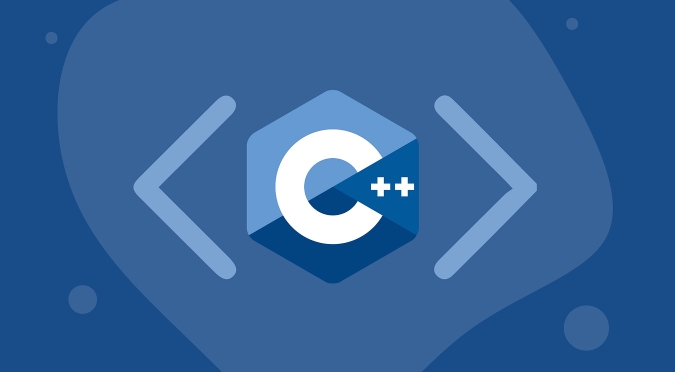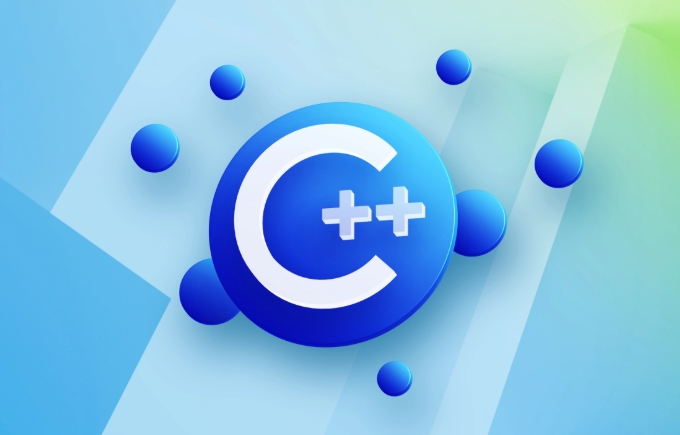C constructor and destructor tutorial
Jul 08, 2025 am 01:33 AMThe constructor is used to initialize the object, and the destructor is used to clean up resources. The constructor is automatically called when the object is created, and has no return value and can be overloaded, such as the default constructor Person() and the parameter constructor Person(string name); if the constructor is not customized, the compiler will generate the default version. The destructor is automatically called at the end of the object's life cycle and is used to release resources. It is not overloadable, such as ~FileHandler(). In terms of call order, member variables are constructed before the class they belong to, and destruction is the opposite. For example, the construction of member A in class B occurs before the B construct, and destruction is after it.

The constructor and the precipitation function are the core parts of the C class design, which are responsible for the initialization and cleaning of objects respectively. Understanding the role and call timing of these two functions is very important for writing safe and efficient C programs.

Constructor: Automatically call when creating an object
The constructor is automatically executed when creating an object, and is mainly used to set the initial state of the object. It has no return value type and the name must be the same as the class name. There can be multiple constructors (overloads) to select the appropriate version according to the different parameters passed in.

For example:
class Person {
public:
Person() { cout << "default constructor" << endl; }
Person(string name) : name(name) { cout << "Constructor with Parameters" << endl; }
private:
string name;
};Common ways of using include:

- Default constructor:
Person p; - Parameter constructor:
Person p("Tom");
Note: If you do not write the constructor yourself, the compiler will automatically generate a default constructor. But as long as you define any constructor, the default one will not be generated.
Destructor: Automatically call before the end of the object's life cycle
The destructor is used to free up resources occupied by the object, such as closing files, freeing memory, etc. Its name is to add a ~ to the class name, which cannot have parameters and cannot be overloaded.
Example:
class FileHandler {
public:
FileHandler(const string& filename) {
// Open file logic}
~FileHandler() {
// Close file logic cout << "Destructor call, free resource" << endl;
}
};Destructors usually do not require manual calls and will be automatically triggered in the following situations:
- Local objects leave scope
- Use
deleteto delete dynamically allocated objects - Internal elements will also be destructed when containers are destroyed
If your class involves resource management, be sure to remember to write a destructor, otherwise it will easily cause memory leakage or resource not released.
Pay special attention to the order of constructing and destructuring
When an object is a member variable of a certain class, the construction order is first the parent class and then the member variable, and finally the constructor of the current class; the destruction order is completely opposite.
For example:
class A {
public:
A() { cout << "A construct" << endl; }
~A() { cout << "A destructuring" << endl; }
};
class B {
public:
B() { cout << "B Construct" << endl; }
~B() { cout << "B destruction" << endl; }
private:
A a;
};
int main() {
B b;
}The output result is:
A Construct B Construct B Destruction A Destruction
This indicates that the construction of the member variable occurs before the constructor of the class, and the destructor follows it.
Basically that's all. Although the mechanism of constructors and destructors is simple, they often need to be considered in actual development in conjunction with resource management and inheritance structure. If you are not careful, you may cause problems, such as shallow copy resulting in repeated releases, forgetting to release resources, etc. As long as you master the basic principles and practice more with examples, you can use them proficiently.
The above is the detailed content of C constructor and destructor tutorial. For more information, please follow other related articles on the PHP Chinese website!

Hot AI Tools

Undress AI Tool
Undress images for free

Undresser.AI Undress
AI-powered app for creating realistic nude photos

AI Clothes Remover
Online AI tool for removing clothes from photos.

Clothoff.io
AI clothes remover

Video Face Swap
Swap faces in any video effortlessly with our completely free AI face swap tool!

Hot Article

Hot Tools

Notepad++7.3.1
Easy-to-use and free code editor

SublimeText3 Chinese version
Chinese version, very easy to use

Zend Studio 13.0.1
Powerful PHP integrated development environment

Dreamweaver CS6
Visual web development tools

SublimeText3 Mac version
God-level code editing software (SublimeText3)

Hot Topics
 C Polymorphism: Enhancing Code Reusability and Flexibility
Jun 10, 2025 am 12:04 AM
C Polymorphism: Enhancing Code Reusability and Flexibility
Jun 10, 2025 am 12:04 AM
Polymorphism in C is implemented through virtual functions and abstract classes, enhancing the reusability and flexibility of the code. 1) Virtual functions allow derived classes to override base class methods, 2) Abstract classes define interfaces, and force derived classes to implement certain methods. This mechanism makes the code more flexible and scalable, but attention should be paid to its possible increase in runtime overhead and code complexity.
 C Polymorphism : is function overloading a kind of polymorphism?
Jun 20, 2025 am 12:05 AM
C Polymorphism : is function overloading a kind of polymorphism?
Jun 20, 2025 am 12:05 AM
Yes, function overloading is a polymorphic form in C, specifically compile-time polymorphism. 1. Function overload allows multiple functions with the same name but different parameter lists. 2. The compiler decides which function to call at compile time based on the provided parameters. 3. Unlike runtime polymorphism, function overloading has no extra overhead at runtime, and is simple to implement but less flexible.
 C Destructors code samples
Jun 13, 2025 am 12:04 AM
C Destructors code samples
Jun 13, 2025 am 12:04 AM
The destructor in C is used to free the resources occupied by the object. 1) They are automatically called at the end of the object's life cycle, such as leaving scope or using delete. 2) Resource management, exception security and performance optimization should be considered during design. 3) Avoid throwing exceptions in the destructor and use RAII mode to ensure resource release. 4) Define a virtual destructor in the base class to ensure that the derived class objects are properly destroyed. 5) Performance optimization can be achieved through object pools or smart pointers. 6) Keep the destructor thread safe and concise, and focus on resource release.
 What Are the Different Kinds of Polymorphism in C ? Explained
Jun 20, 2025 am 12:08 AM
What Are the Different Kinds of Polymorphism in C ? Explained
Jun 20, 2025 am 12:08 AM
C has two main polymorphic types: compile-time polymorphism and run-time polymorphism. 1. Compilation-time polymorphism is implemented through function overloading and templates, providing high efficiency but may lead to code bloating. 2. Runtime polymorphism is implemented through virtual functions and inheritance, providing flexibility but performance overhead.
 How to Implement Polymorphism in C : A Step-by-Step Tutorial
Jun 14, 2025 am 12:02 AM
How to Implement Polymorphism in C : A Step-by-Step Tutorial
Jun 14, 2025 am 12:02 AM
Implementing polymorphism in C can be achieved through the following steps: 1) use inheritance and virtual functions, 2) define a base class containing virtual functions, 3) rewrite these virtual functions by derived classes, and 4) call these functions using base class pointers or references. Polymorphism allows different types of objects to be treated as objects of the same basis type, thereby improving code flexibility and maintainability.
 C : Is Polymorphism really useful?
Jun 20, 2025 am 12:01 AM
C : Is Polymorphism really useful?
Jun 20, 2025 am 12:01 AM
Yes, polymorphisms in C are very useful. 1) It provides flexibility to allow easy addition of new types; 2) promotes code reuse and reduces duplication; 3) simplifies maintenance, making the code easier to expand and adapt to changes. Despite performance and memory management challenges, its advantages are particularly significant in complex systems.
 C Destructors: Common Errors
Jun 20, 2025 am 12:12 AM
C Destructors: Common Errors
Jun 20, 2025 am 12:12 AM
C destructorscanleadtoseveralcommonerrors.Toavoidthem:1)Preventdoubledeletionbysettingpointerstonullptrorusingsmartpointers.2)Handleexceptionsindestructorsbycatchingandloggingthem.3)Usevirtualdestructorsinbaseclassesforproperpolymorphicdestruction.4
 Polymorphism in C : A Comprehensive Guide with Examples
Jun 21, 2025 am 12:11 AM
Polymorphism in C : A Comprehensive Guide with Examples
Jun 21, 2025 am 12:11 AM
Polymorphisms in C are divided into runtime polymorphisms and compile-time polymorphisms. 1. Runtime polymorphism is implemented through virtual functions, allowing the correct method to be called dynamically at runtime. 2. Compilation-time polymorphism is implemented through function overloading and templates, providing higher performance and flexibility.






